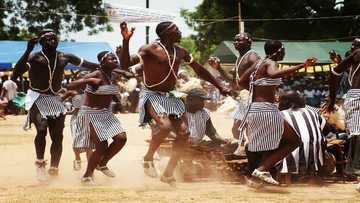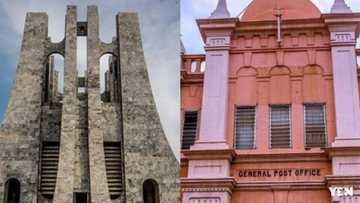Famous volcanoes: A list of 20 volcanoes and volcanic eruptions around the world
Nature is undeniably beautiful, but it can also be violent and dangerous at times. As an example, volcanic eruptions or severe weather conditions. Although these events are catastrophic, sometimes the landmarks that follow become iconic. With that in mind, read on to learn about the world's most famous volcanoes.

Source: Getty Images
What is a volcano? It is a mountain formed by magma erupting from fissures in the Earth's thin outer crust. The vast majority of volcanoes are found on the slopes of massive plates that comprise the Earth's surface. In addition, during a volcanic eruption, molten rock, ash, and hazardous gases are ejected with tremendous force from a magma chamber beneath the ground.
So, what are the top 10 famous volcanoes? The list below includes the top 10 plus 10 more notable additions.
- Mount Fuji, Japan
- Eyjafjallajökull, Iceland
- Mauna Loa and Kilauea, Hawaii
- Mount Etna, Italy
- Pico de Fogo, Cape Verde
- Pacaya, Guatemala
- Mount Vesuvius, Italy
- Villarrica, Chile
- Shishaldin, Alaska
- Mount Bromo, Indonesia
- Stromboli, Sicily
- Mount Ruapehu, New Zealand
- Cotopaxi, Ecuador
- Isabela Island, Galapagos, Ecuador
- Mount Mayon, Philippines
- Krakatoa, Indonesia
- Agung, Indonesia
- Poás, Costa Rica
- Mount St Helens, Washington
- Mount Yasur, Vanuatu
What are the top 20 famous volcanoes?
There are approximately 1350 active volcanoes on the planet. Some are famous for their sheer size, breathtaking views, or hiking trails. Learn more about these volcanoes, including their locations and what to do when visiting them. Here are some of the world's top volcanoes below:
1. Mount Fuji, Japan
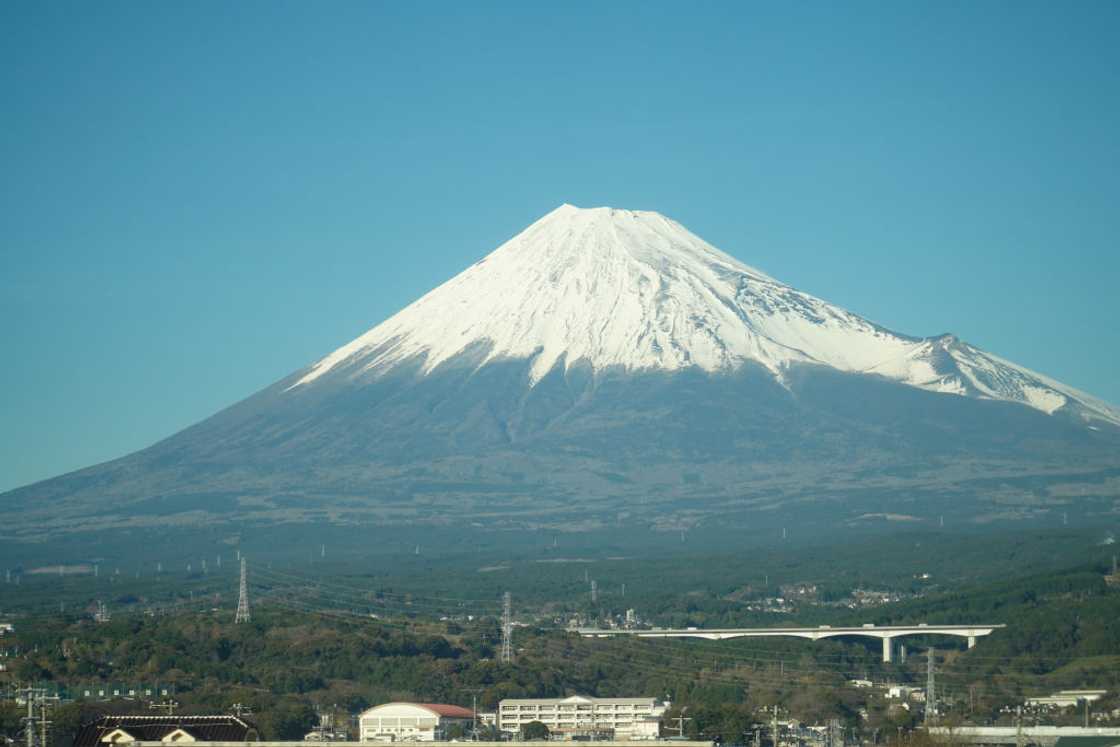
Source: Getty Images
What is the most interesting volcano? Mount Fuji, located on the island of Honshu, is Japan's highest mountain and a stunning marvel. It stands at 3,776.24 meters (12,389.2 ft). It is Asia's second-highest volcano and the seventh-highest island peak on the planet.
Mount Fuji is a live stratovolcano that last erupted in 1707 and 1708. It has a symmetrical cone that is snow-covered for nearly five months out of the year.
Where to stay
- Fuji Onsenji Yumedono: For a luxurious ryokan stay.
- Lakeland Hotel Mizunosato: Ideal for a family stay.
What to do
- Visit the Fuji-Q Highland Amusement Park.
- A day-long tour from Tokyo, including a cruise and lunch.
2. Eyjafjallajökull, Iceland
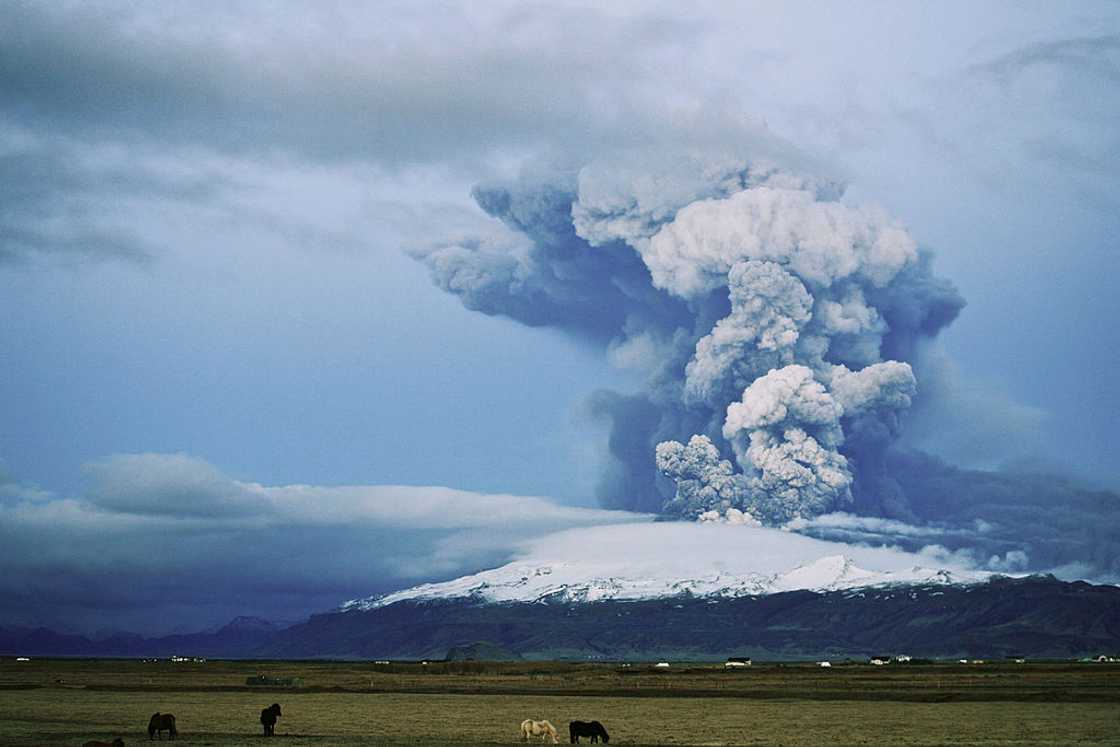
Source: Getty Images
Eyjafjallajökull is a smaller ice cap located in Iceland, north of Skógar and west of Mrdalsjökull. The ice cap encircles a volcano with a 1,651-meter summit elevation (5,417 ft). In 2010, Eyjafjallajökull erupted, disrupting air travel across Western and Northern Europe for a week.
Where to stay
- Volcano Huts: For a remote nature experience.
- Hotel Eyjafjallajökull: Ideal for a family stay.
What to do
- Try the Superjeep and Hiking Tour in Thormark from Reykjavik.
- Visit the Wild South Waterfalls, Black Beach & Glacier Hike from Reykjavik.
3. Mauna Loa and Kilauea, Hawaii
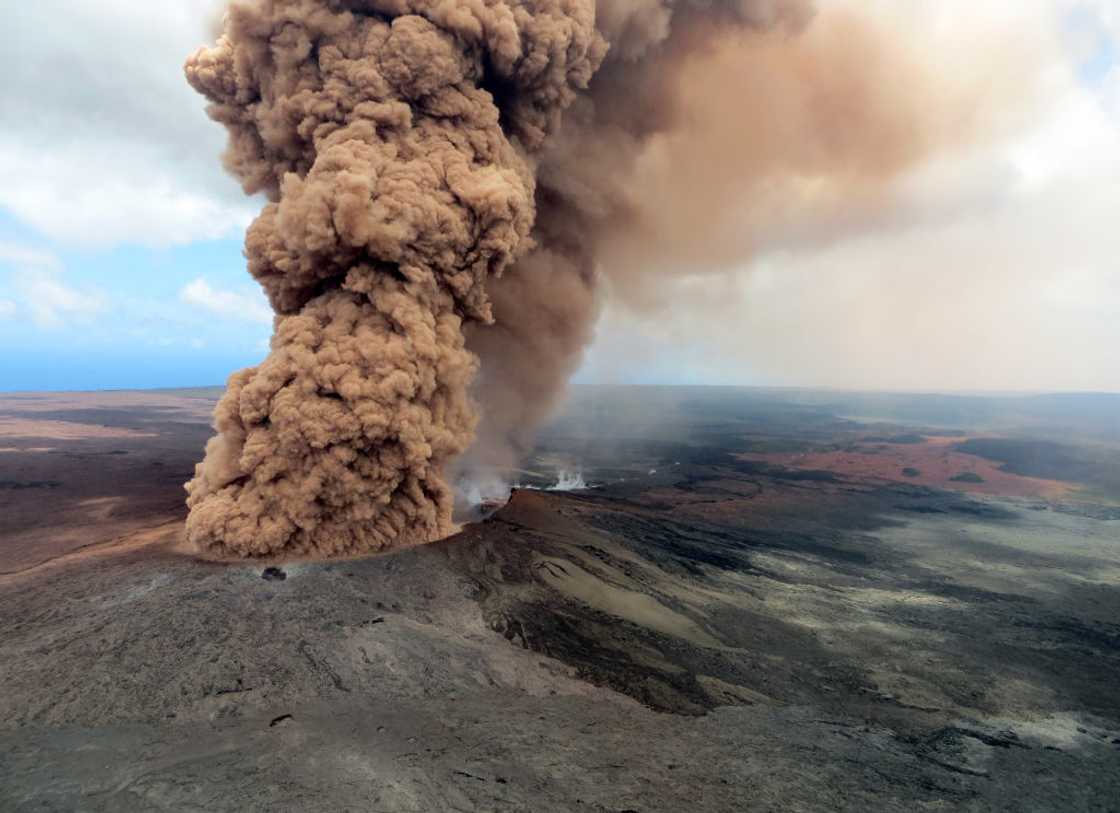
Source: Getty Images
Mauna Loa is one of the five volcanoes that make up the island of Hawaii. It is the world's largest subaerial volcano in terms of mass and volume, and it was once thought to be the world's biggest volcano.
It is an active shield volcano with relatively gentle slopes and a volume of 75,000 km3. Mauna Loa lava outbursts are silica-poor, extremely fluid, and non-explosive in general.
Where to stay
- Kilauea Lodge and Restaurant: Offers the best views.
- At the Craters Edge: Ideal guesthouse.
What to do
- Big Island Circle Tour and adventure from Kona.
- Stargazing.
4. Mount Etna, Italy
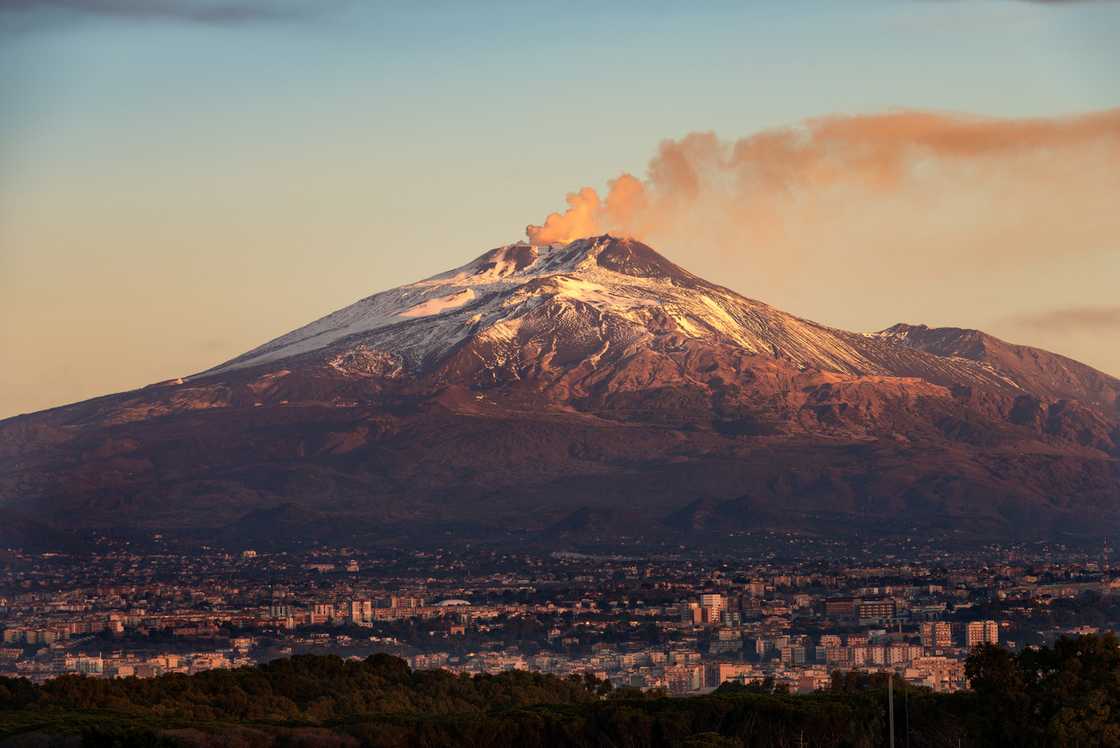
Source: Getty Images
Mount Etna is an active stratovolcano on the east coast of Sicily, Italy, located in the Metropolitan City of Catania. With a basal diameter of 140 km and an area of 1,190 km2 (459 sq mi), Etna is one of Europe's tallest active volcanoes (87 miles).
Where to stay
- Casa Monte Etna: Ideal veiws.
- Corsaro Etna Hotel & Spa: Best Spa.
What to do
- Guided hike to the summit (includes cable car and jeep).
- Sunset Jeep tour to Mount Etna.
5. Pico de Fogo, Cape Verde

Source: Getty Images
Pico do Fogo is an active stratovolcano on the Cape Verdean Island of Fogo. It is the highest peak in Cape Verde and West Africa, standing at 2,829 meters (9,281 feet) above sea level.
The last time the central cone erupted was in 1680, when emergency teams evacuated the entire island. A subsidiary vent erupted in 1995, the most recent being in 2014.
Pico do Fogo is the youngest and most active volcano on the Cape Verde Islands.
Where to stay
- Casa Alcindo: Offers ideal mountain views.
- Hotel Ocean View & Restaurante Seafood: Offers ideal ocean views.
What to do
- Guided hike to the summit.
- Guided Fogo Island tour.
6. Pacaya, Guatemala

Source: Getty Images
Pacaya is a Guatemalan active complex volcano that erupted approximately 23,000 years ago. It is 2,552 meters above sea level (8,373 ft) and began erupting again in 1961, after being dormant for about 70 years.
The majority of its activity is Strombolian, but it does have Plinian eruptions on occasion, which can cause ash to fall nearby.
Where to stay
- Kawilal Hotel: Offers a comfort and wellness experience.
- Villa El Rosario: Ideal for a family stay.
What to do
- 2h-trek of Pacaya from Antigua.
- Pacaya Volcano tour (includes hot springs & lunch).
7. Mount Vesuvius, Italy
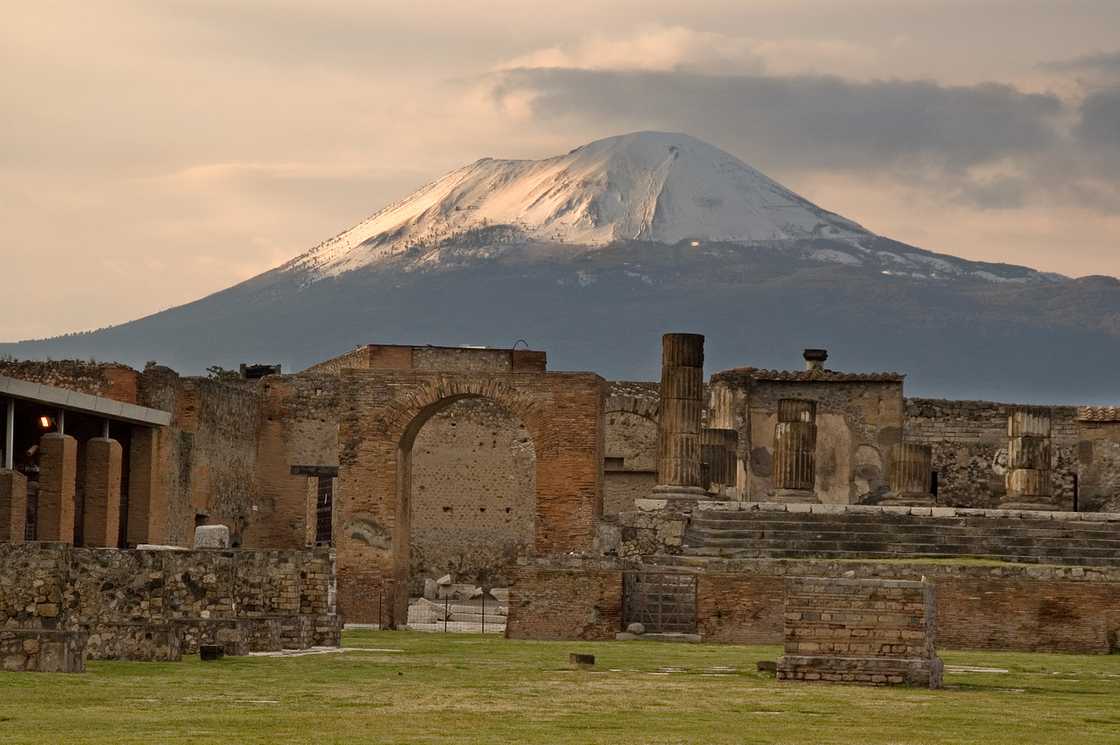
Source: Getty Images
Mount Vesuvius is a somma-stratovolcano in Campania, Italy, located on the Gulf of Naples. It is made up of a large cone partially surrounded by the steep rim of a summit caldera.
Mount Vesuvius' eruption in AD 79 obliterated the Roman cities of Pompeii, Herculaneum, Oplontis, and Stabiae. Because of the population living nearby, it is now regarded as one of the most dangerous volcanoes in the world.
Where to stay
- Puntaquattroventi: Ideal for seafront.
- Grand Hotel Oriente: Ideal for a family stay.
What to do
- Enjoy food and wineries after a hike up to the crater.
- Full day tour from Naples or Sorrento to Pompeii and Mount Vesuvius.
8. Villarrica, Chile
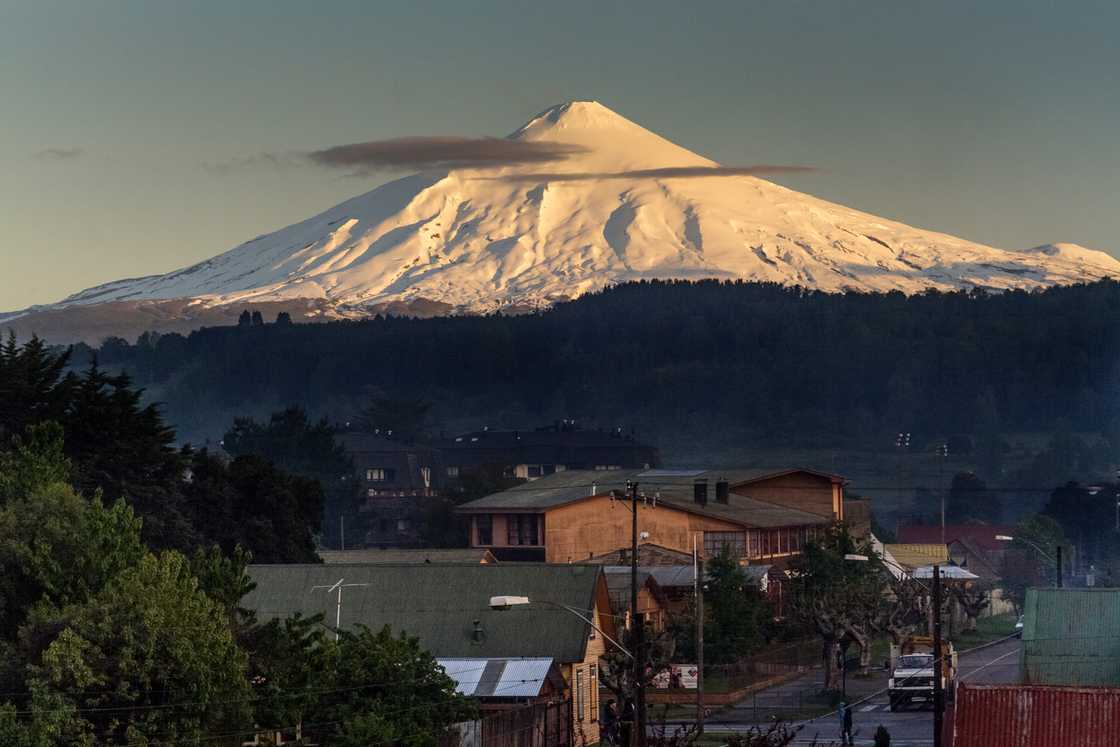
Source: Getty Images
Villarrica, 750 kilometres (470 miles) south of Santiago, is one of Chile's most active volcanoes. It is the westernmost of three large stratovolcanoes that trend northwest to southeast along the Mocha-Villarrica Fault Zone, perpendicular to the Andean chain. During the summer, guided ascents are popular.
Villarrica is one of only a few volcanoes globally with an active (but intermittent) lava lake within its crater with its basaltic-andesitic lava. The volcano typically produces strombolian eruptions, including incandescent pyroclasts and lava flows.
Where to stay
- Hostel El Alcazar: Ideal for a budget stay.
- Hotel Terraza Suite: Best for families.
What to do
- Enjoy a day-long tour from Pucon plus a hike up Villarrica with an experienced guide.
9. Shishaldin, Alaska

Source: Getty Images
Mount Shishaldin is a moderately active volcano located on Unimak Island in Alaska's Aleutian Islands chain. It is the Aleutian Islands' highest mountain peak. The volcano is the westernmost of three large stratovolcanoes that run east-west across Unimak Island's eastern half.
Where to stay
- Sitka Hotel: Ideal for hiking adventures.
- Alaskan Hotel and Bar: Offers a budget-friendly stay.
What to do
- Take a guided tour to see the spectacular after-dark display of the Northern lights.
10. Mount Bromo, Indonesia
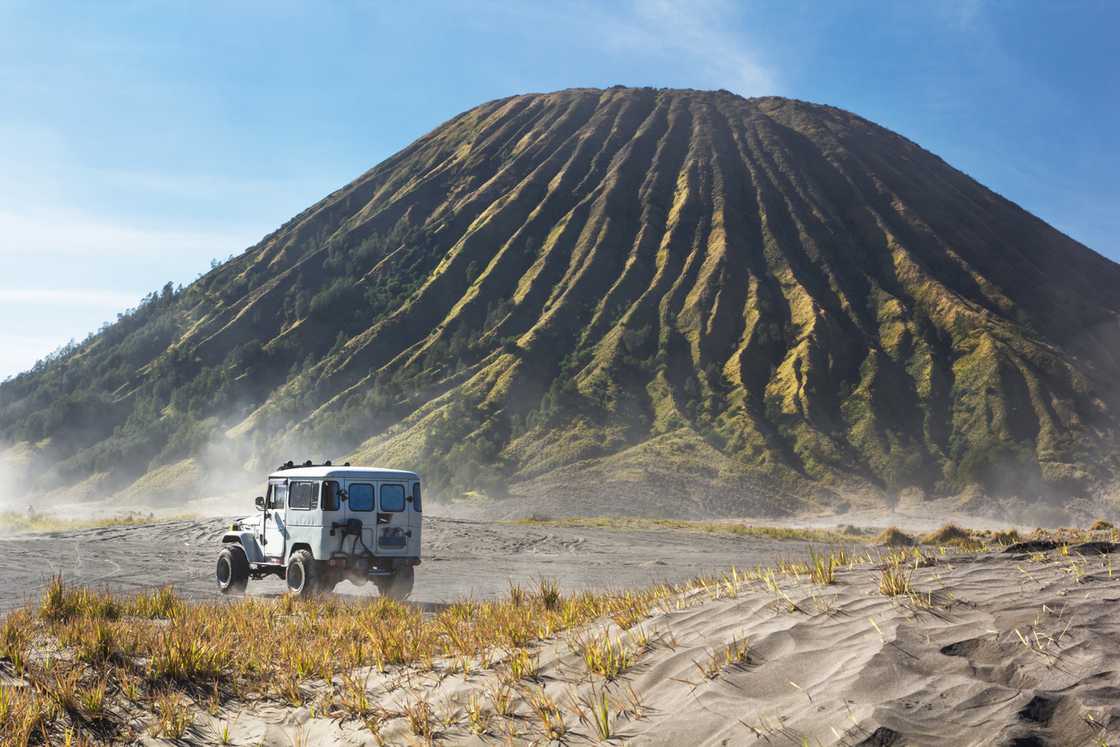
Source: Getty Images
Mount Bromo is an active somma volcano in East Java, Indonesia, and the Tengger mountains. It is not the highest peak in the massif, but it is the most famous, standing at 2,329 meters (7,641 feet).
Bromo is among the unique volcanoes names in the world. It derives its name from the Javanese pronunciation of Brahma, the Hindu god of creation. Mount Bromo is situated in the middle of a plain known as the "Sea of Sand," designated as a nature reserve since 1919.
Where to stay
- Cahyo Homestay Bromo: Ideal for the local experience.
- Happy Volcano Backpacker Hostel Dormitory: Best for solo travellers.
What to do
- See the sunrise over Mount Bromo from Surabaya.
- If you're staying in Bali, take a 3-day tour of Mount Bromo and Ijen Crater with an expert guide.
The list above completes the world's most famous volcanoes. But there are other honourable mentions. Here they are below:
11. Stromboli, Sicily
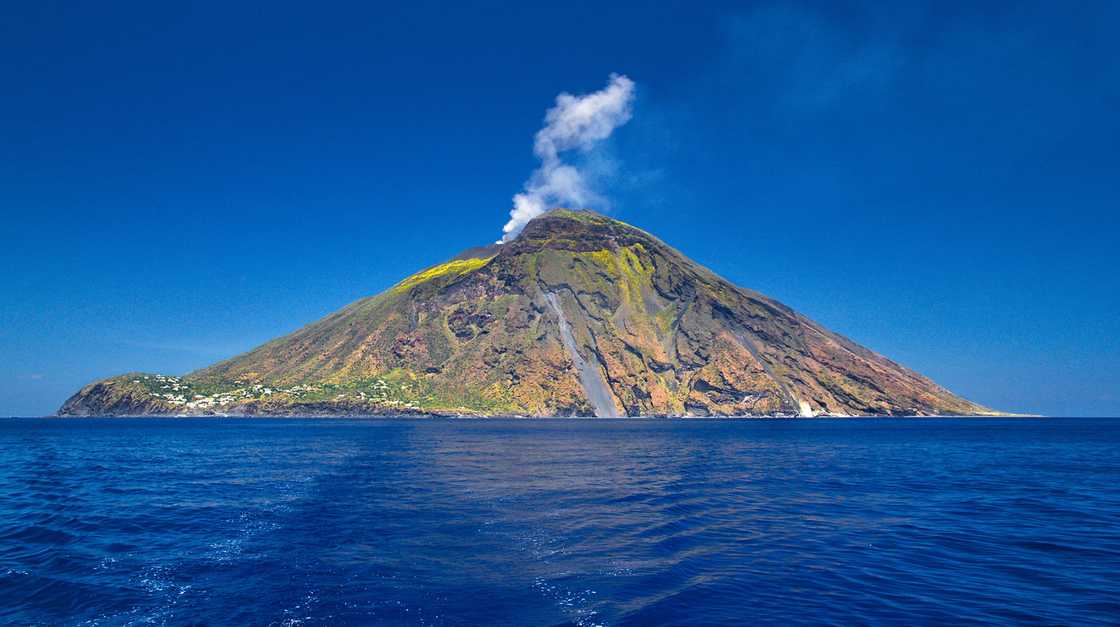
Source: Getty Images
Mount Stromboli has erupted almost continuously for the last 2,000–5,000 years, with the most recent major eruption occurring in 1921. Mild to moderate eruptions occur at intervals ranging from minutes to hours, maintaining an eruption pattern characterized by explosions at the summit craters.
Where to stay
- La Sirenetta Park Hotel: Offers ideal stunning views.
- Agriturismo SoleMar: Best for a family stay.
What to do
- Go on a guided sunset trek and enjoy fantastic views of the beautiful surrounding landscape.
12. Mount Ruapehu, New Zealand
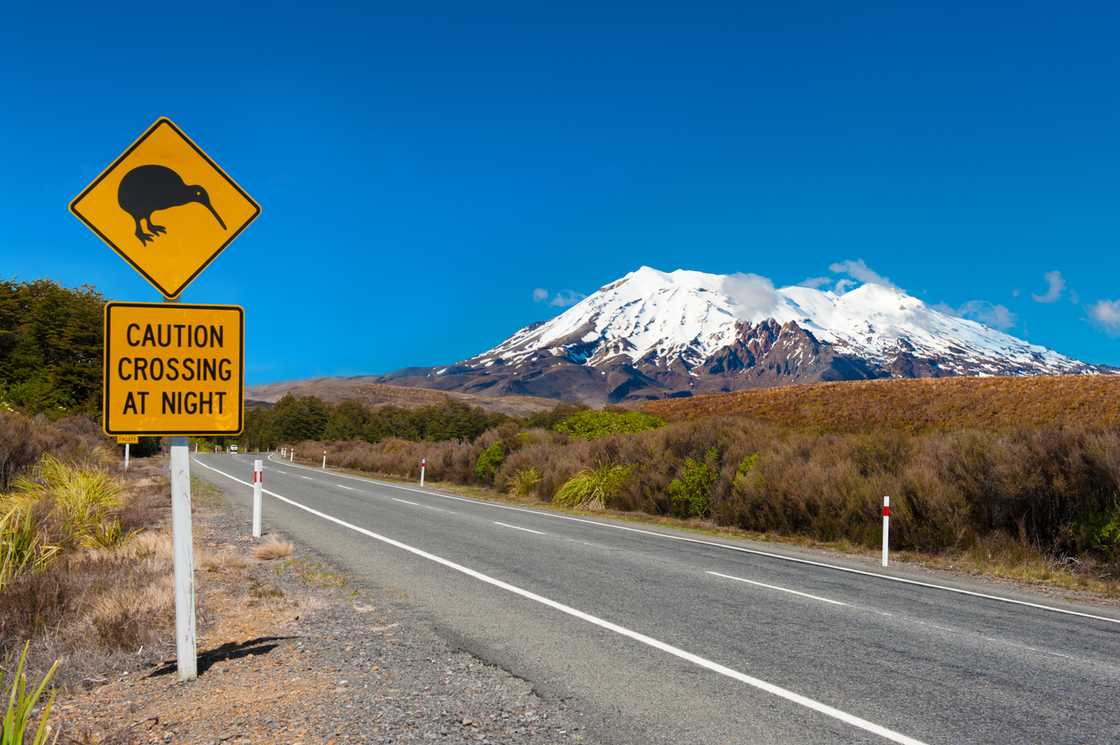
Source: Getty Images
Mount Ruapehu is an active stratovolcano located at the southern end of the Taupo Volcanic Zone. It's in Tongariro National Park, about 23 kilometres northeast of Ohakune and about 23 kilometres southwest of Lake Taupo's southern shore.
Where to stay
- Chateau Tongariro Hotel: Best for a luxurious stay.
- The Park Hotel Ruapehu: Offers the ideal budget option.
What to do
- A guided audio tour of the Tongariro Crossing or to the Ruapehu Crater Lake.
13. Cotopaxi, Ecuador

Source: Getty Images
Cotopaxi is an active stratovolcano in the Andes Mountains, located in the city of Latacunga. It is one of the most active volcanoes on the planet, with the most recent eruption occurring in 2015-2016. As a result, authorities prohibited climbing on the mountain until it reopened on October 7, 2017.
Since 1738, Cotopaxi has erupted more than 50 times, resulting in numerous valleys around the volcano due to lahars (mudflows).
Where to stay
- Hacienda Los Mortiños: Best for incredible views.
- Cuscungo Cotopaxi Hostel & Lodge: Best for solo travellers.
What to do
- Hiking & Biking on Cotopaxi from Quito or a full-day tour from Quito exploring Cotopaxi
14. Isabela Island, Galapagos, Ecuador

Source: Getty Images
Isabela is located on the archipelago's western edge, near the Galápagos hotspot. The island was formed about 1 million years ago when six shield volcanoes merged: Alcedo, Cerro Azul, Darwin, Ecuador, Sierra Negra, and Wolf.
Where to stay
- Hostal Galapagos by Bar de Beto: Ideal for tourists.
- Hotel Albemarle: Offers a beachfront view.
What to do
- Enjoy the sun and fine sand before the area turns into a party hotspot after sunset. Of course, you could also try your hand at surfing.
- The Otavalo Market will appeal to cultural vultures. There are many lovely handicrafts and weavings on display.
15. Mount Mayon, Philippines

Source: Getty Images
Mount Mayon is an active stratovolcano on the Philippine Island of Luzon, located in Albay, Bicol Region. It is a popular tourist destination known for its "perfect cone" shape due to its symmetric conical shape and is revered in Philippine mythology.
Where to stay
- Balay de la Rama Bed & Breakfast: Best for a relaxing bed & breakfast.
- The Marison Hotel: Ideal for a stay with the family.
What to do
- Explore the surroundings on ATV and take in the views on this thrilling adventure.
16. Krakatoa, Indonesia
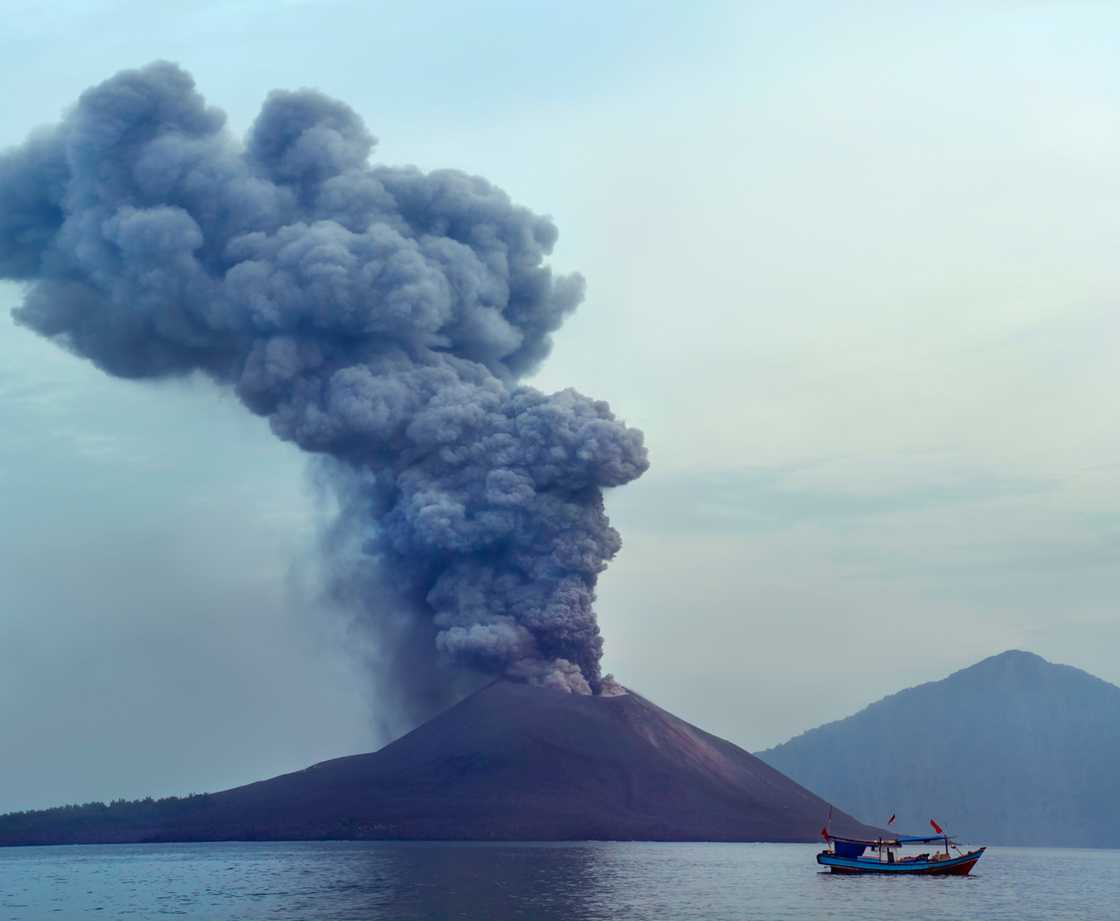
Source: Getty Images
Krakatoa is a caldera in the Sunda Strait between the islands of Java and Sumatra in the Indonesian state of Lampung. The Krakatoa Archipelago consists of four volcanic islands, which includes the caldera.
Since the late twentieth century, there has been new eruptive activity, with a massive collapse in December 2018 triggering a devastating tsunami.
Where to stay
- Grand Elty Krakatoa: Ideal when you're in Sumatra.
- Mutiara Carita Cottages: Best if you're staying in Java.
What to do
- Explore the Baluran National Park. The park measures over 50,000 hectares (124,000 acres), and it's inside an eroded volcano cone.
17. Agung, Indonesia

Source: Getty Images
Mount Agung is an active volcano on the Indonesian island of Bali, southeast of Mount Batur. Bali's highest point dominates the surrounding area and influences the climate, particularly rainfall patterns.
The mountain appears to be perfectly conical from a distance. In addition, its most recent eruptions occurred between 2017 and 2019.
Where to stay
- Abian Ayu Villa: Offers nature with amazing views of Agung.
- Batur Volcano Guesthouse: Ideal for travellers.
What to do
- Witness the sunrise from Mount Batur with an experienced guide
- If in Agung, visit the Mother temple and Lempuyang for amazing photos
18. Poás, Costa Rica
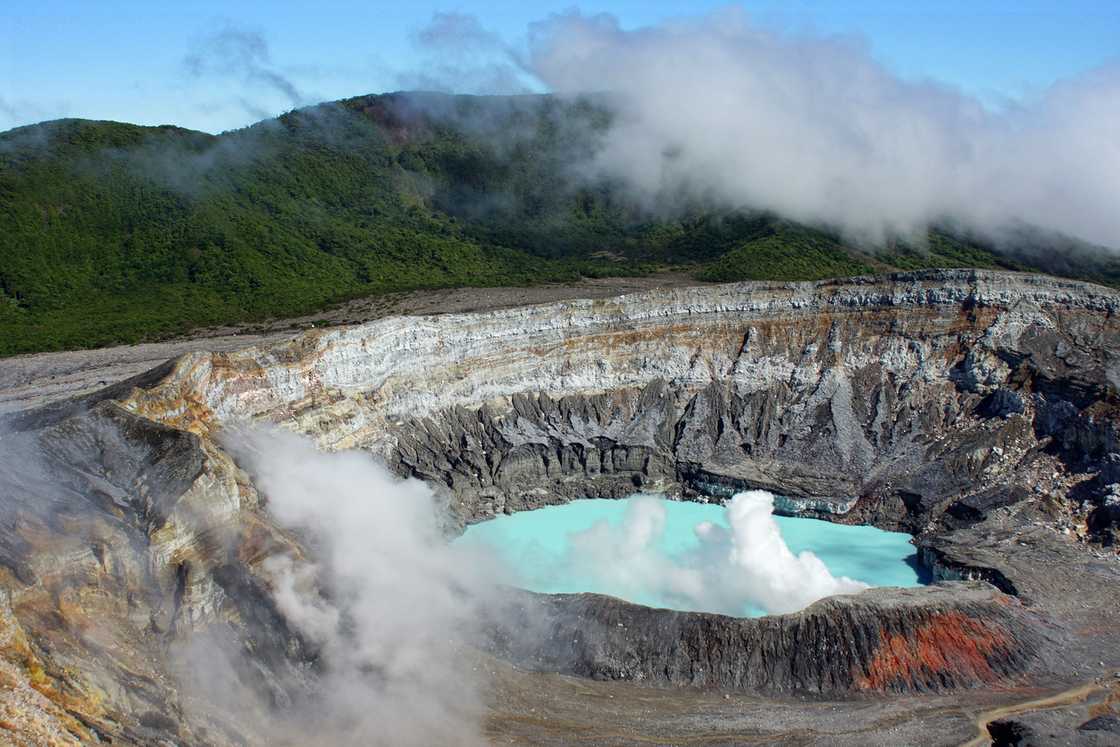
Source: Getty Images
The Poás Volcano is an active stratovolcano in central Costa Rica with a height of 2,697 meters (8,848 feet). It has erupted 40 times since 1828, most recently in April 2017, forcing visitors and residents to flee. In September 2019, the volcano erupted briefly twice.
Where to stay
- La Cabaña Poas: Offers the best views of nature.
- Dushi Vida Country Inn: Ideal when staying in Alajuela.
What to do
- Enjoy a day-long tour to Doka, Poás and La Paz Waterfalls.
19. Mount St Helens, Washington

Source: Getty Images
Mount St. Helens is an active stratovolcano in Skamania County, Washington, United States. St. Helens is best known for its massive eruption on May 18, 1980, killing 57 people. A massive debris avalanche caused a lateral explosion, lowering the mountain's summit elevation from 9,677 ft (2,950 m) to 8,363 ft (2,549 m).
Where to stay
- The Mark Spencer Hotel: Offers the ideal stay.
- The Paramount Hotel: Best when staying in Seattle.
What to do
- Take a day trip from Seattle in a small group to experience the history and stories of St Helens.
20. Mount Yasur, Vanuatu
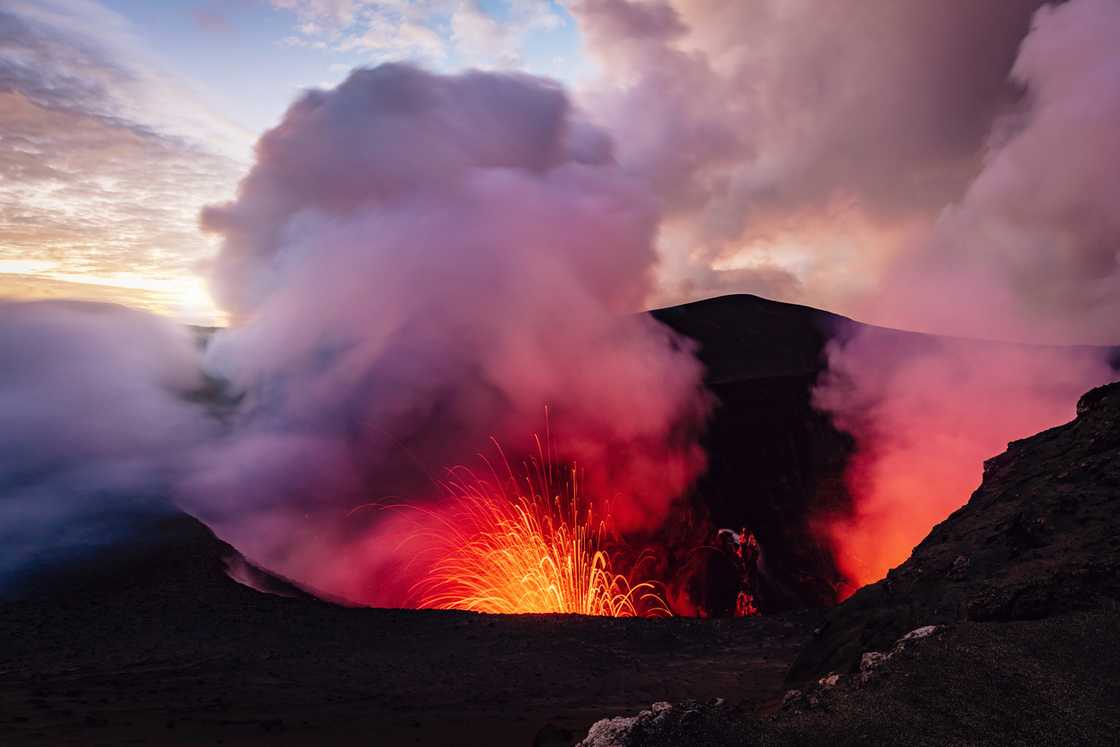
Source: Getty Images
Mount Yasur is a stratovolcano on Tanna Island, Vanuatu, near Sulphur Bay, northeast of Mount Tukosmera. It has a largely unvegetated pyroclastic cone with a 400-meter-diameter summit crater. Its eruptions are classified as Strombolian or Vulcanian, and they occur several times per hour.
Where to stay
- White Grass Ocean Resort & Spa: Best for spa treatments.
- Rockwater Resort: Best for private beach access.
What to do
- Enjoy the adventure at the Vanuatu Jungle Zipline and private beach access.
- Enjoy a family day out while Kayaking & Waterfall tour from Port Vila.
What are the largest volcanic eruptions in history?
Throughout history, volcanoes have erupted in terrifying ways. The magnitude of such eruptions is calculated using the Volcanic Explosivity Index (VEI). The scale runs from 1 to 8, with each subsequent VEI ten times greater than the previous one.
What is the biggest volcanic eruption in history? Find out in the list below.
- Yellowstone, 640,000 years ago – VEI 8
- Huaynaputina, 1600 – VEI 6
- Krakatoa, 1883 – VEI 6
- Santa Maria, 1902 – VEI 6
- Novarupta, 1912 – VEI 6
What are the 5 biggest volcanoes in history?
Below is a list of the biggest volcanoes around the world by elevation from their base on the ocean floor:
- Mauna Kea – 10203 m
- Mauna Loa – 9170 m
- Haleakala – 9144 m
- Teide – 7500 m
- Piton des Neiges – 7071 m (over 8000 m before its collapse)
What are the four types of volcanoes?
There are four types of volcanoes: cinder cones, composite, shield, and lava dome.
Famous volcanoes are popular tourist destinations. These landmarks are iconic and define the landscapes on which they stand. If you want to visit any of these places, the information provided above will assist you in making a decision.
Yen.com.gh recently published an interesting article about the world's top 15 beach resorts. So which resorts have the most stunning beaches? Regardless of location, an ideal resort offers personalized service, pampering touches, and all-inclusive rates.
Learn about the top 15 best luxury all-inclusive resorts in the world, as well as the amenities they provide.
Source: YEN.com.gh



